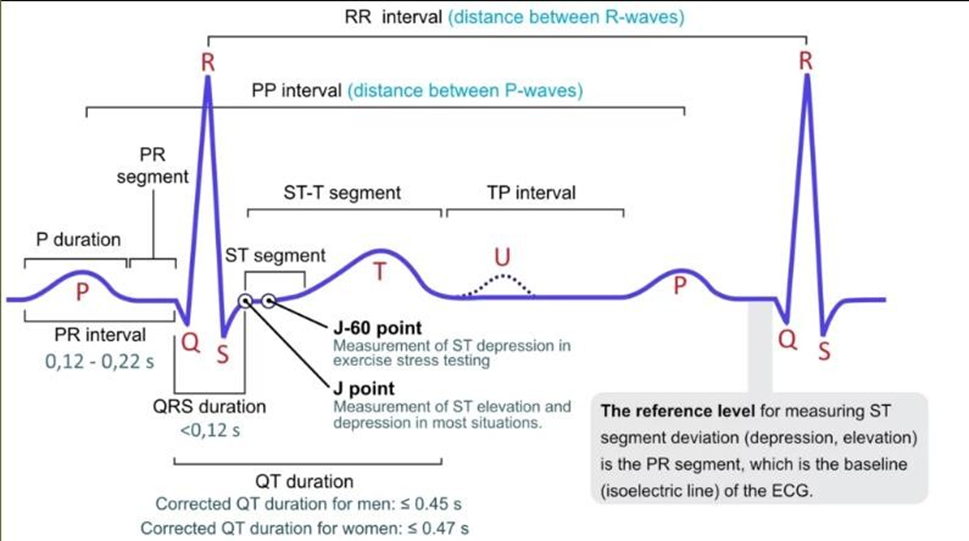A nurse is caring for a client diagnosed with congestive heart failure and is taking digoxin daily. The client refused breakfast and is complaining of nausea and weakness. Which of the following actions should the nurse take first?
Check an apical pulse
Request a dietitian consult.
Request an order for an antiemetic
Suggest that the client rests before eating the meal
The Correct Answer is A
A. Check an apical pulse: Digoxin is known to cause toxicity, which can manifest as nausea, weakness, and anorexia. Bradycardia is a common sign of digoxin toxicity. Therefore, the nurse's first action should be to assess the client's apical pulse rate to determine if there are any signs of bradycardia, which could indicate digoxin toxicity.
B. Request a dietitian consult: While nutrition is important, the client's symptoms of nausea and weakness need immediate attention to rule out digoxin toxicity before considering dietary interventions.
C. Request an order for an antiemetic: Administering an antiemetic may be indicated if the client is experiencing nausea, but it's crucial to assess for digoxin toxicity first, as antiemetics may mask symptoms of toxicity.
D. Suggest that the client rests before eating the meal: Rest may be beneficial for the client, but addressing the potential cause of the symptoms, such as digoxin toxicity, takes priority
Nursing Test Bank
Naxlex Comprehensive Predictor Exams
Related Questions
Correct Answer is "{\"xRanges\":[104.2578125,134.2578125],\"yRanges\":[114.30078125,144.30078125]}"
Explanation

Correct Answer is []
Explanation
Condition Most Likely Experiencing: Heart failure.
The client presents with signs and symptoms consistent with heart failure, including cardiomegaly, bibasilar pleural congestion on chest x-ray, elevated BNP level, and vital signs indicating hypertension (BP 146/98 mm Hg), tachycardia (pulse rate 106/min), and tachypnea (respirations 24/min). Additionally, the client is prescribed medications commonly used to manage heart failure, such as digoxin and carvedilol, and is receiving a diuretic (furosemide) to address fluid overload associated with heart failure.
Action to Take:
Elevate the head of the bed: Elevating the head of the bed helps reduce venous return to the heart, decreasing preload and potentially alleviating symptoms of heart failure, such as dyspnea and orthopnea. It can also help prevent aspiration in clients with compromised cardiac function. Encourage intake of a low-sodium diet: A low-sodium diet is essential in managing heart failure as it helps reduce fluid retention and edema by decreasing fluid volume overload. Sodium restriction helps minimize fluid accumulation, which is crucial in preventing exacerbations of heart failure.
Parameter to Monitor:
Urinary output: Monitoring urinary output is important in assessing fluid balance and response to diuretic therapy in clients with heart failure. Decreased urinary output may indicate worsening heart failure or inadequate response to diuretic therapy, whereas increased output may suggest over-diuresis or improvement in heart failure symptoms.
Blood pressure: Monitoring blood pressure helps assess the effectiveness of treatment in managing heart failure and controlling hypertension, a common comorbidity. Hypertension can exacerbate heart failure, so monitoring blood pressure trends helps guide adjustments in medication therapy to achieve optimal blood pressure control and improve cardiac function.
Whether you are a student looking to ace your exams or a practicing nurse seeking to enhance your expertise , our nursing education contents will empower you with the confidence and competence to make a difference in the lives of patients and become a respected leader in the healthcare field.
Visit Naxlex, invest in your future and unlock endless possibilities with our unparalleled nursing education contents today
Report Wrong Answer on the Current Question
Do you disagree with the answer? If yes, what is your expected answer? Explain.
Kindly be descriptive with the issue you are facing.
